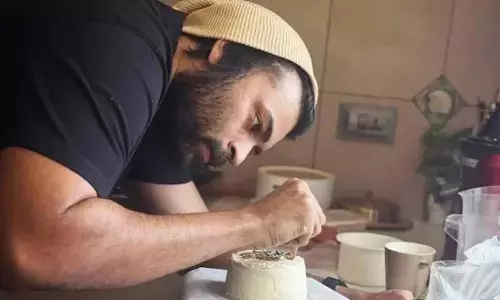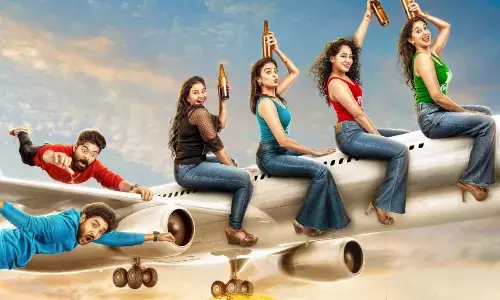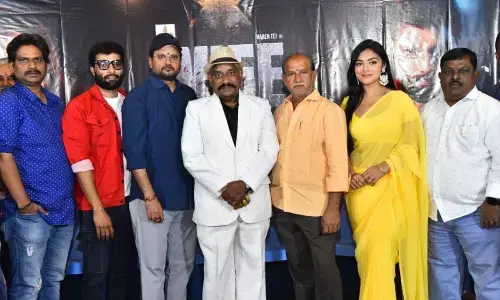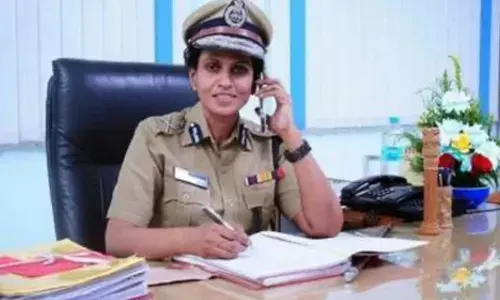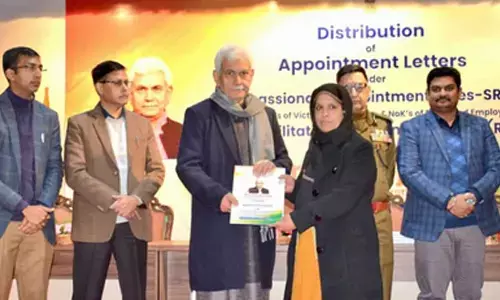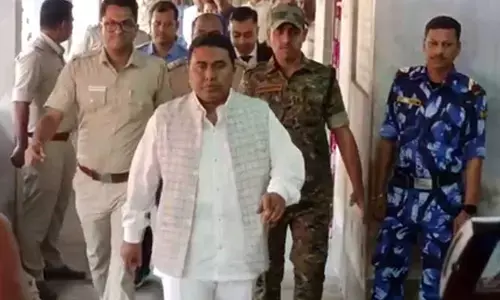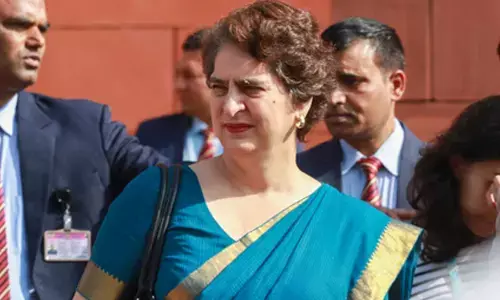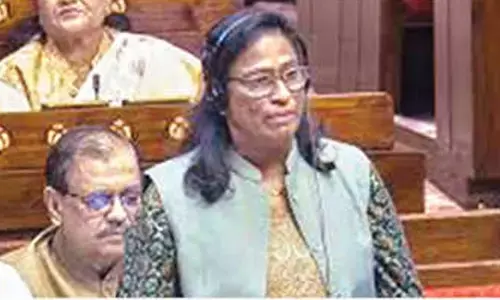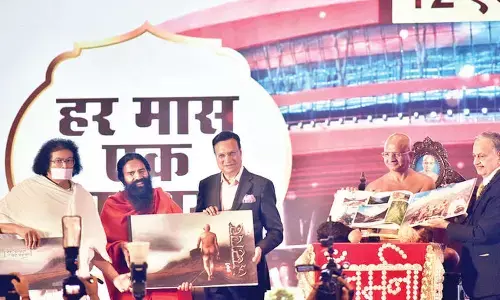Ganapati in different forms

For those who think that it's only Mumbai which celebrates 'Ganesh Chaturthi' with gusto, the twin cities are a perfect answer. With big pandals and varied forms of Ganesh, the city stand close to Mumbai for the Ganesh Utsav, which started on Monday.
Approximately 50,000 small and big pandals have been erected in city. As usual, the centre of attraction for this year remains the Kharitabad Ganesha, standing at 59-feet tall. But apart from the Khairatabad Ganesh, uniquely themed Ganeshas become the eye candy for this year. The Ice-Ganesha at Kurla, Mumbai saw many devotees dressed in an Eskimo suit, offering prayers to their beloved Elephant God, much like the Snow World in Hyderabad.

Many pandals in the city have a unique theme apart from tastefully decorated Kolkata styled pandals. These pandals are well equipped with sound and light systems which amplify the look and décor of the stage. The special attraction this year at Ganesh Pandal in Takarabasti, Secunderabad is the idol of Lord Hanuman which depicts the story of Ramayana after Sita gets abducted from the forest. The entire story is depicted with the help of light and sound show and the movement of idols which gives it a realistic touch.
“There is a rope from the inside till the exit which is almost 100 meters. Hanuman flies out from the side of Pandal in the end scene. We spent around Rs four lakhs this year only on Hanuman installation. We brought this installation from Mumbai,” says Dharam Raj Choudhry, Member, Ashoka Yuvajana Sangham Takarabasti. 2000 -3000 people are expected everyday and the shows starts from 5 pm and goes on till 1 am or more depending on the size of crowd.

Similar festivities have been experienced at many pandals across the city. They were graced by GHMC corporators and politicos who offered pujas. At Khairatabad Ganesh pandal, APSACS director C Parthasarathi offered a 75-foot khanduva for the 59- feet idol on Monday.
Community prayers
It is not known when and how Ganesh Chaturthi was first celebrated. Ganesh Chaturthi was celebrated as a public event in Pune since the times of Shivaji (1630-1680), the founder of the Maratha Empire. The Peshwas, the de facto hereditary administrators of the empire from 1749 till its end in 1818, encouraged the celebrations in their administrative seat as Ganesha was their family deity (Kuladevata). With the fall of the Peshwas, Ganesh Chaturthi lost its state patronage and became a private family celebration again till its revival by Indian freedom fighter and social reformer Lokmanya Tilak.
In 1893, Lokmanya Tilak transformed the annual domestic festival into a large, well-organised public event. Tilak recognised the wide appeal of the deity Ganesha as "the God for everybody", and popularised Ganesh Chaturthi as a national festival in order "to bridge the gap between Brahmins and non-Brahmins and find a context to build unity between them at the grassroot level", and generate nationalistic fervour among people in Maharashtra against the British colonial rule.
Tilak was the first to install large public images of Ganesh in pavilions, and also established the practice of submerging the idols in rivers, sea, or other pools of water on the tenth day after Ganesh Chaturthi. Under Tilak's encouragement, the festival facilitated community participation and involvement in the form of intellectual discourses, poetry recitals, performance of plays, musical concerts, and folk dances. It served as a meeting ground for people of all castes and communities in times when, in order to exercise control over the population, the British discouraged social and political gatherings.

Next Story










